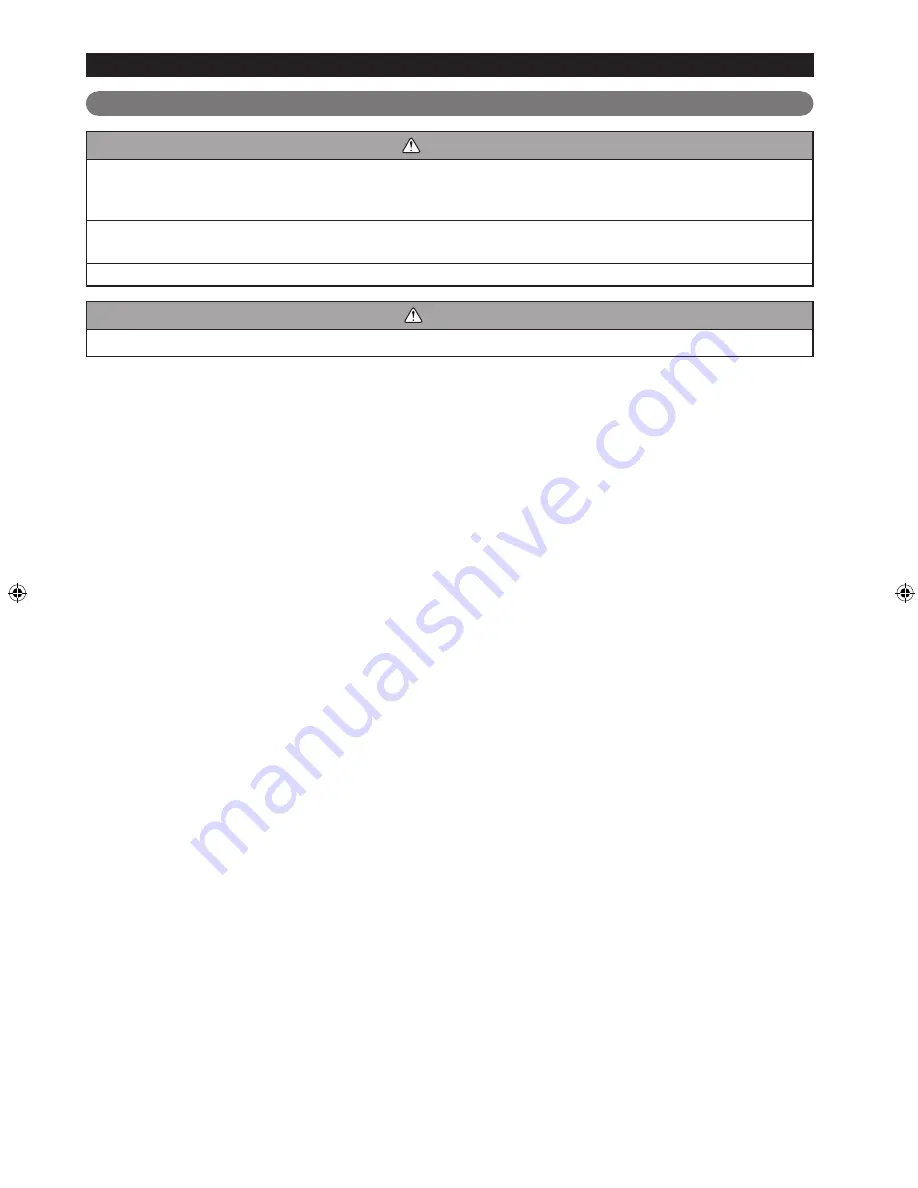
En-22
PIPE INSTALLATION II
71
Sealing test
71 11
WARNING
Before operating the compressor, install the pipes and securely connect them. Otherwise, if the pipes are not
•
installed and if the valves are open when the compressor operates, air could enter the refrigeration cycle. If this
happens, the pressure in the refrigeration cycle will become abnormally high and cause damage or injury.
After the installation, make sure there is no refrigerant leakage. If the refrigerant leaks into the room and
•
becomes exposed to a source of fire such as a fan heater, stove, or burner, it produces a toxic gas.
Do not subject the pipes to strong shocks during the sealing test. It can rupture the pipes and cause serious injury.
•
CAUTION
For maintenance purposes, do not bury the piping of the outdoor unit.
•
After connecting the pipes, perform a sealing test.
•
Make sure that the 3-way valves are closed before performing a sealing test.
•
Pressurize nitrogen gas to 4.15MPa (600psi) to perform the sealing test.
•
Add nitrogen gas to both the liquid pipes and the gas pipes.
•
Check all flare connections and welds. Then, check that the pressure has not decreased.
•
Compare the pressures after pressurizing and letting it stand for 24 hours, and check that the pressure has not
•
decreased. If the pressure has dropped, the pipe joints may be leaking.
* When the outdoor air temperature changes 5 °C (9 °F), the pressure changes 0.05MPa (7.25psi). When outdoor
air temperature raises/drops by 5°C (9 °F), the pressure will raise/fall by 0.05MPa (7.25psi) accordingly.
If a leak is found, immediately repair it and perform the sealing test again.
•
After completing the sealing test, release the nitrogen gas from both valves.
•
Release the nitrogen gas slowly.
•
9379069342-02_IM.indb 22
17/5/2556 11:49:59






























